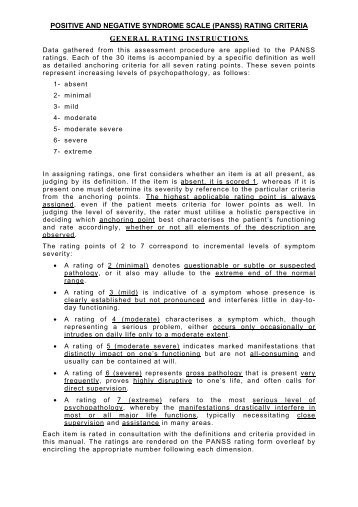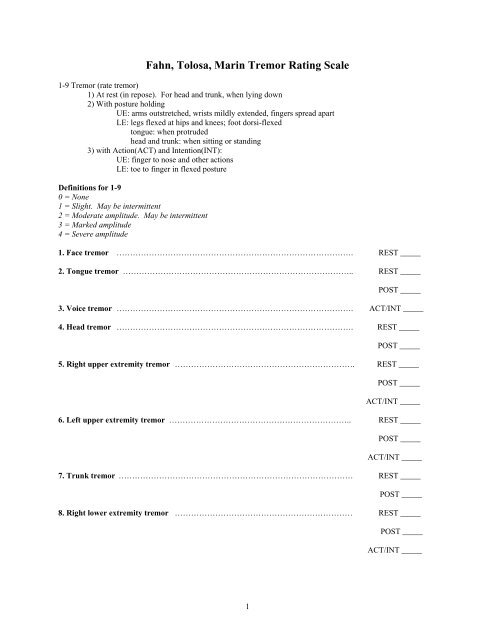Fahn Tolosa Marin Tremor Rating Scale Pdf Drawings

It offers constructive suggestions regarding how Indonesian religion can play a significant role within the framework of Pancasila, Indonesia's national ideology. Buku pendidikan pancasila pdf to jpg. Author by: Arief Budiman Language: en Publisher by: Monash Asia Inst Format Available: PDF, ePub, Mobi Total Read: 99 Total Download: 279 File Size: 42,5 Mb Description: Due to its popularity, this collection of conference papers has been reprinted. In short, far from being anti-pluralist, Indonesian religion evolves as a liberating force in the life of society, nation, and state.' Based on a Christian-Muslim dialogue, it is only within the realm of civil society that Indonesian religion will be able to promote the ideas of democracy, tolerance, and human rights in Indonesian public affairs.
Background The Fahn‐Tolosa‐Marin Clinical Rating Scale for Tremor (FTM) has been used in large trials for essential tremor (ET), but its anchors for ratings from 0 to 4 of upper limb tremor are probably too low for patients with severe tremor (tremor amplitude >4 cm; grade 4). The Essential Tremor Rating Assessment Scale (TETRAS) is a validated clinical scale designed specifically for the assessment of ET severity. TETRAS has anchors that span a larger range of tremor amplitudes (>20 cm = grade 4), making it more suitable for assessing patients with severe ET. However, there is no direct comparison of these scales in any clinical trial. Results FTM ratings of postural and kinetic tremor correlated strongly with those of TETRAS.
However, FTM exhibited a ceiling effect for severe tremor. Half life 1 client dll files. Rest tremor, exclusive to FTM, correlated poorly with postural and kinetic tremor and had very poor test‐retest reliability. In contrast, wing‐beating postural tremor, exclusive to TETRAS, exhibited excellent test‐retest reliability and a strong correlation with kinetic and limbs‐extended‐forward postural tremor. Test‐retest reliabilities of the other TETRAS and FTM ratings were excellent, and both scales had good sensitivity to treatment effect. Clinical trials for essential tremor (ET) have employed dozens of different scales and assessments as measures of primary efficacy. The most commonly used scale in large trials has been the Fahn‐Tolosa‐Marin Clinical Rating Scale for Tremor (FTM). The Essential Tremor Rating Assessment Scale (TETRAS) is a more recently validated scale that was designed specifically for the assessment of tremor severity in patients with ET.

Both expert and novice raters perform TETRAS with excellent inter‐rater and intra‐rater reliability. The reliability of FTM is less established. Large numbers of raters, rating a small sample of patients, found good intra‐rater reliability and fair inter‐rater reliability for the tremor location/severity items but only fair intra‐rater reliability and poor inter‐rater reliability for spiral drawing and handwriting ratings. The reliability of the water‐pouring task was not assessed. There are 2 main differences in how upper limb tremor is assessed using these scales.
First, the FTM assesses postural tremor in the limbs‐extended‐forward posture, kinetic tremor in the finger‐nose‐finger reaching task, and rest tremor while both upper limbs are relaxed on the patient's lap, all of which are performed while the patient is seated. TETRAS does not assess rest tremor but does include an assessment of postural tremor in the “wing‐beating” position, in which the elbows are flexed and extended laterally with shoulders abducted, such that the upper limbs are held horizontally with the hands in front of the upper chest. Second, the 0 to 4 ordinal ratings of upper limb tremor in TETRAS span a much larger range of tremor amplitudes than the FTM, and 0.5 increments in ratings are used in TETRAS.
Grade 4 tremor in TETRAS corresponds to amplitudes greater than 20 cm, whereas grade 4 tremor in FTM corresponds to amplitudes greater than 4 cm. With this expanded amplitude range, TETRAS should exhibit far less ceiling effect in studies of severe ET and could be more sensitive to change. However, this theoretical advantage of TETRAS over the FTM has not been empirically assessed. A recent systematic review of tremor rating scales found that the FTM and TETRAS are valid scales that are sensitive to change in clinical trials. Both scales correlate well with transducer measures of tremor, and total scores correlate strongly with each other., However, there are few additional comparative data, and test‐retest reliability estimates are needed for both scales. Therefore, we compared upper extremity tremor ratings between the FTM and TETRAS using video‐recorded examinations of 76 patients who participated in a study of focused ultrasound thalamotomy. We hypothesized that FTM ratings would exhibit a ceiling effect for severe ET.
- четверг 22 ноября
- 33